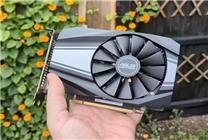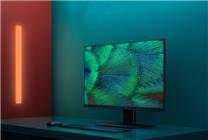Summary
- Performance on Entry-Level Hardware: Battlefield 6 runs smoothly on older systems, including the GTX 1650 Super with stable FPS performance.
- Optimization Techniques: Players can tweak settings such as resolution and anti-aliasing for improved gameplay fluidity.
- Well-Optimized Game: The title stands out for its flexible optimization options, making it accessible to a wider range of gamers.
On October 13, Battlefield 6 made a strong debut, immediately claiming the top spot on Steam. Its commendable optimization impressed many, allowing it to perform well even with older hardware, such as the Ryzen 5 5600G, which delivered a seamless 45 FPS.
Testing by the popular YouTube channel RandomGaminginHD examined Battlefield 6’s performance using an entry-level NVIDIA GeForce GTX 1650 Super graphics card, which launched in 2019, paired with an Intel Core i5-12400F processor. The results were promising, showcasing how accessible high-quality gaming can be.
Equipped with 4GB of GDDR6 video memory, the GTX 1650 Super displayed a stable frame rate of 50-60 FPS at 1080p resolution on low settings. Despite nearly maxing out the video memory, the game maintained a consistent performance, underscoring its efficient use of resources.
To mitigate frame drops and stuttering, the testing team employed several optimization strategies. They disabled high-resolution textures and lessened visual effects, helping maintain smooth gameplay. Notably, attempts to enhance performance with super-resolution technologies like AMD’s FSR and Intel’s XeSS did not yield improvements and, in some scenarios, even caused frame time inconsistencies due to the limitations of video memory.
Further analysis revealed that reducing the resolution to 50% while keeping the native resolution at 1080p and turning off Temporal Anti-Aliasing (TAA) significantly improved performance. During these tests, the gameplay saw remarkably high frame rates, peaking around 70-80 FPS. However, users should be aware that this comes at the cost of visual fidelity, resulting in some pixelation due to the lower resolution.
When the resolution scaling was set to 60% with anti-aliasing turned off, the graphics quality improved, allowing for a stable 60 FPS in most cases. This balance between performance and visual quality exemplifies the game’s adaptability to various hardware capabilities.
Ultimately, RandomGaminginHD concluded that Battlefield 6 is indeed playable on the GTX 1650 Super, provided gamers are willing to make some sacrifices in terms of image quality for enhanced performance. This level of flexibility in optimization is a rarity in modern gaming, making Battlefield 6 one of the most well-optimized titles in recent years.
With its efficient use of resources, Battlefield 6 sets a new standard for accessibility and performance in the gaming community. Users looking to experience immersive gameplay without the need for high-end graphics cards may find this title a perfect fit.
By focusing on key performance metrics and providing actionable optimization advice for various hardware capabilities, this article aims to inform and engage readers, showcasing Battlefield 6 as an exemplary title in today’s gaming landscape.








